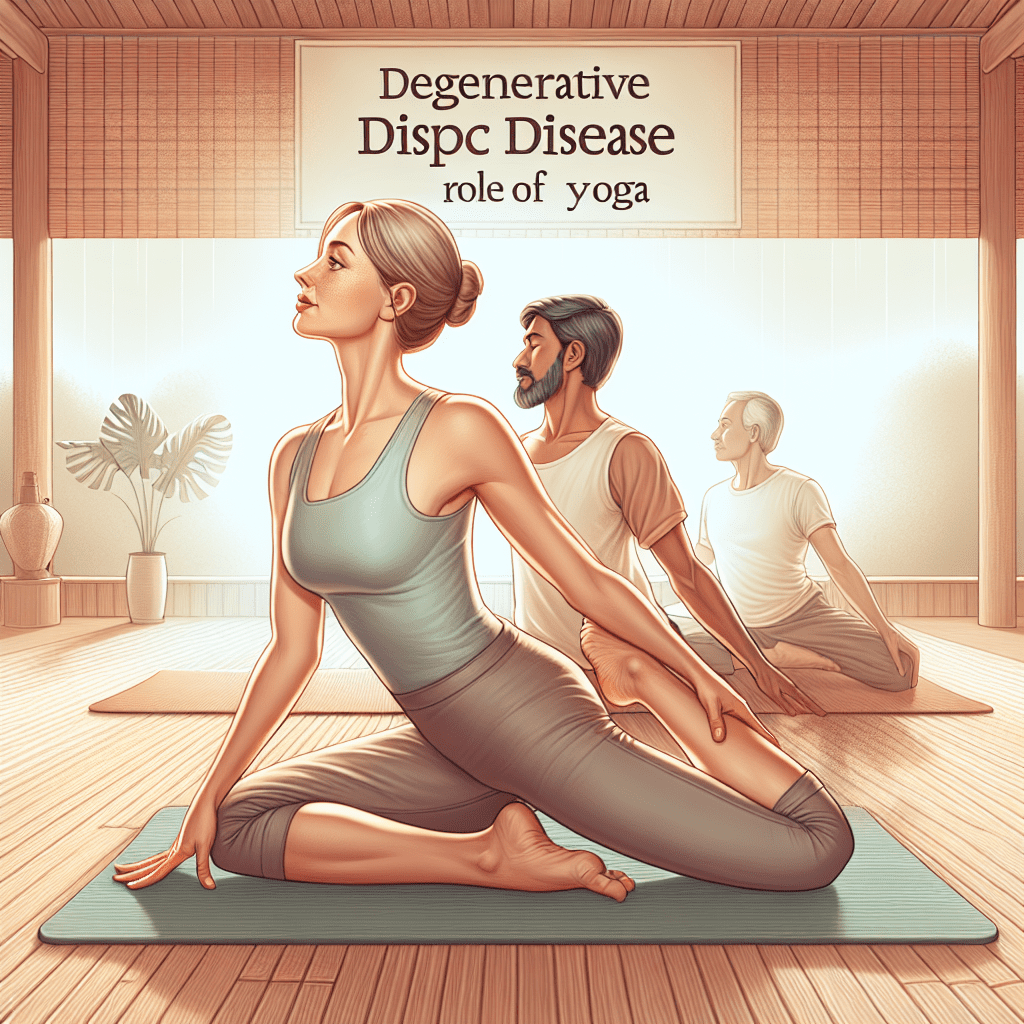===INTRO:===
Are you struggling with the debilitating effects of degenerative disc disease? This condition can lead to chronic pain, reduced mobility, and a significant decrease in quality of life. Millions of individuals face the challenges posed by this ailment, often feeling trapped by the limitations it imposes. But what if there was a method to alleviate discomfort and regain mobility? Enter yoga, an ancient practice that holds profound potential for those grappling with degenerative disc disease. In this article, we will explore the intricacies of this condition and demonstrate how yoga can serve as a powerful tool for relief and restoration.
Understanding Degenerative Disc Disease and Its Challenges
Degenerative disc disease (DDD) is a condition that affects the intervertebral discs in the spine, leading to a gradual loss of disc height, flexibility, and overall function. As these discs degenerate, they can cause pain, stiffness, and a host of other symptoms that profoundly impact daily activities. The challenges often include persistent back pain, sciatica, and limitations in movement that can make even simple tasks feel daunting. Patients frequently find themselves navigating a maze of treatments, medications, and potential surgical interventions—all while searching for effective relief.
The emotional toll of DDD cannot be overstated. The chronic pain associated with this condition often leads to frustration, anxiety, and depression. Individuals may feel isolated as they struggle to maintain their previous level of activity, leading to a downward spiral in physical and mental health. This emotional burden is compounded by the uncertainty surrounding the effectiveness of various treatments, leaving many patients feeling helpless and apprehensive about their future.
Fortunately, understanding the underlying mechanisms of DDD can empower patients to take proactive steps toward managing their condition. By identifying specific triggers that exacerbate symptoms and recognizing the importance of maintaining spinal health, individuals can begin to explore alternative therapies. One approach that is gaining recognition is yoga, a practice that not only promotes physical well-being but also fosters mental resilience and emotional balance.
How Yoga Practices Can Alleviate Pain and Improve Mobility
Yoga offers a multifaceted approach to managing degenerative disc disease, focusing on flexibility, strength, and mindfulness. Through specific postures and techniques, yoga can enhance spinal alignment, reduce tension in surrounding muscles, and promote overall body awareness. Gentle stretches and movements can alleviate pressure on the discs, offering relief from nagging pain while also improving mobility. For many, the practice becomes a sanctuary where they can reconnect with their bodies and find moments of peace amidst the chaos of discomfort.
Additionally, a key aspect of yoga is its emphasis on breath control and relaxation techniques. Deep, controlled breathing not only calms the mind but also assists in reducing muscle tension and enhancing oxygen flow to the affected areas. This aspect of yoga can play a crucial role in managing pain, as it encourages a state of relaxation that allows the body to heal. Practitioners often report a profound sense of relief, as they learn to navigate their pain through focused breathing and thoughtful movement.
Moreover, yoga fosters a sense of community and support that can be invaluable for individuals dealing with chronic conditions. Many yoga studios and classes offer tailored programs specifically designed for those with spinal issues, creating an inclusive environment where participants can share experiences and support one another. This social aspect can significantly enhance motivation and accountability, making it easier to stick to a regular practice that yields lasting benefits. By integrating yoga into their lives, individuals with degenerative disc disease can cultivate not only physical health but also emotional resilience.
===OUTRO:===
In conclusion, managing degenerative disc disease requires a comprehensive approach that addresses both physical and emotional well-being. Yoga emerges as a transformative practice that offers a unique blend of physical benefits, stress reduction, and community support. By incorporating yoga into your routine, you can take an active role in your healing journey, paving the way for improved mobility and enhanced quality of life. If you’re ready to explore this age-old practice as a means to confront the challenges of degenerative disc disease, consider joining a class or seeking guidance from a qualified instructor. Your path to relief could begin with a single breath on the mat.
Submitting Your Web Wrapped Curio: A Step-by-Step GuideStrategic Hiding Spots in Life is Strange Pool SceneEffective Strategies for Hiding Your Tablet in PaliaRelevant LinkRelevant LinkRelevant LinkExploring the Impact of 40,000 Daily Steps on Weight LossEffective Yoga Poses for Optimal Weight Loss and WellnessComprehensive Reviews of Happy Mammoth Weight Loss ProgramRelevant LinkRelevant LinkRelevant Link



